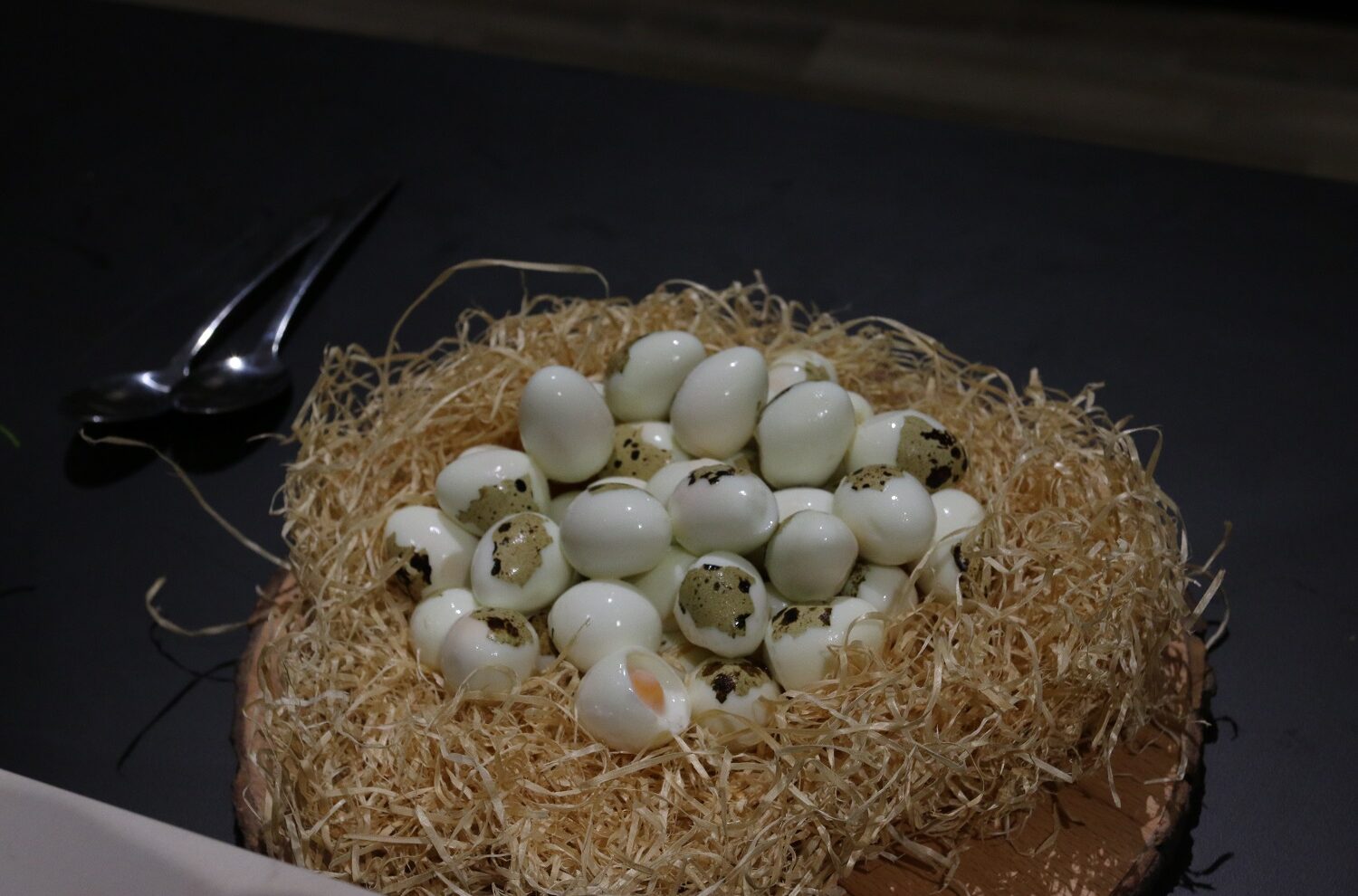Prehistory becomes part of the dining experience
©Sébastien Gayet
The teams at Grotte Chauvet 2 are offering an exceptional culinary experience over the space of a few ‘Knowledge and Flavours’ evenings, with original (and tasty!) prehistoric buffets.
Grilled oysters with thyme and dried seaweed from fishing are cooked on a hot stone. Freshly foraged mushrooms with wild garlic and rosemary are cooked in beef fat over a wood fire, accompanied by lentil hummus and young carrots roasted in beef fat over the embers. Rabbit cooked on a wood fire, chestnut and wild root stew, honey-poached and grilled quail and grilled and smoked ox are all also available. For sweet treats, there are grilled apples and pears, blueberries and goat’s curd with hazelnut honey praline, and almonds, walnuts and pine nuts. All are served with beer, wine, mead or herbal infusions.
This mouth-watering prehistoric buffet, carefully created by chef Thierry Lennon and his team at the Grotte Chauvet 2 restaurant, is being offered to coincide with the series of talks on the subject of animals, to be held in 2023.
Creating tasty dishes without using modern seasoning
So, how do we know what we ate in prehistoric times? “Thanks to archaeology, archaeobotany and archaeozoology,” explains Valérie Molès, who is head of cultural, educational and scientific outreach at Grotte Chauvet 2. “Food residues found between teeth and analysed under microscopes reveal exactly what prehistoric men and women ate. The way in which teeth have been worn also provide clues. Any fires near living places are also extremely valuable. Anything which is burnt (bones, shells, etc.) comes from animals which have been eaten.”
These fascinating studies reveal that people during the Upper Palaeolithic period (42,000 to 10,000 years ago) had a healthy diet and much better teeth than those during the Neolithic period (9,000 to 3,500 years ago).

After a great deal of research into articles and books on prehistoric food, Valérie Molès, Florian Jaquier and Marc Fleury from the mediation department provided chef Thierry Lennon with a list of products.
“The challenge was to create tasty dishes without using today’s seasonings based on oil, butter, cream, condiments and sugar,” explains the Ardèche chef.
“We’ve carried out tests to match the right products with each other. We’ve built a smokehouse with the technical teams and used large cauldrons with several cooking levels. It’s an incredible experience for us, as well as for the guests!”
LECTURE SERIES ON THE THEME OF ANIMALS
Throughout 2023, Grotte Chauvet 2 will be offering a series of lectures devoted to the close links we have with animals, we sapiens.
Upcoming events:
– Reindeer and Man in the Palaeolithic : an enduring relationship by archaeozoologist Laure Fontana / Friday 16 June at 6.30pm
– Man and large predators in the Palaeolithic: a dangerous cohabitation
by Philippe Fosse Friday 15 September at 6.30pm
– Animals, humanimals, myths and prehistoric art art by anthropologist and mythologist Jean-Loïc Le Quellec Friday 13 October at 6.30pm
Each lecture is followed by a prehistoric buffet.
FIND OUT MORE
Book online via the ticket office
4941 route de Bourg-Saint-Andéol
07150 Vallon-Pont-d’Arc
Phone : +33(0)4 75 94 39 40
info@grottechauvet2ardeche.com